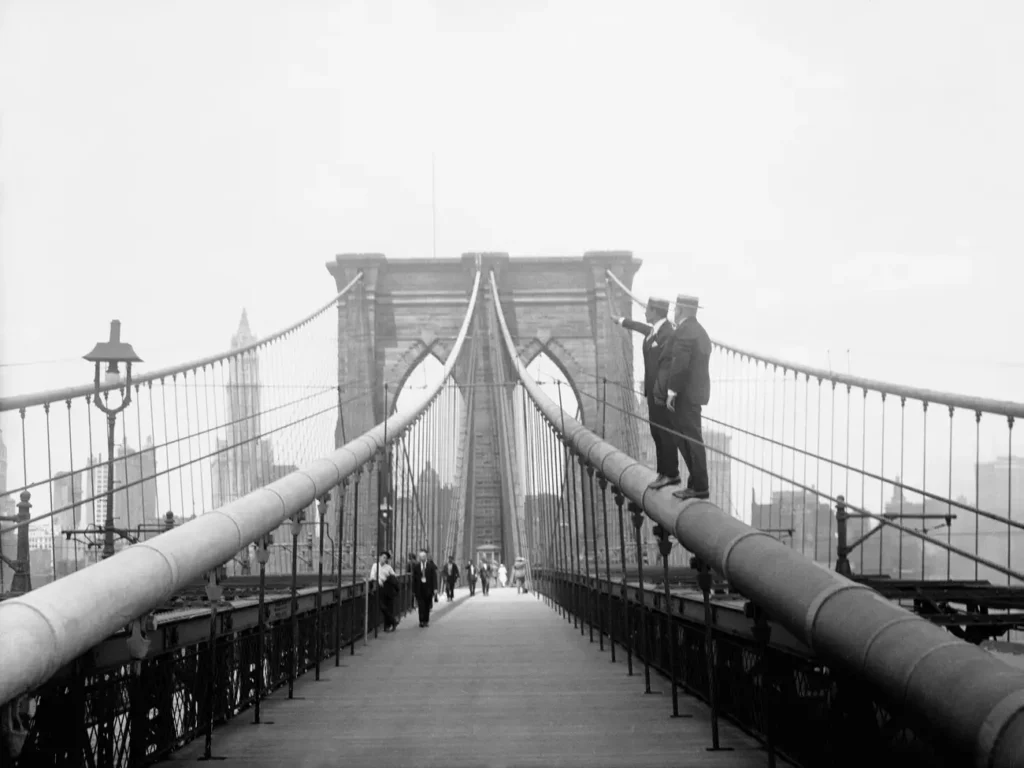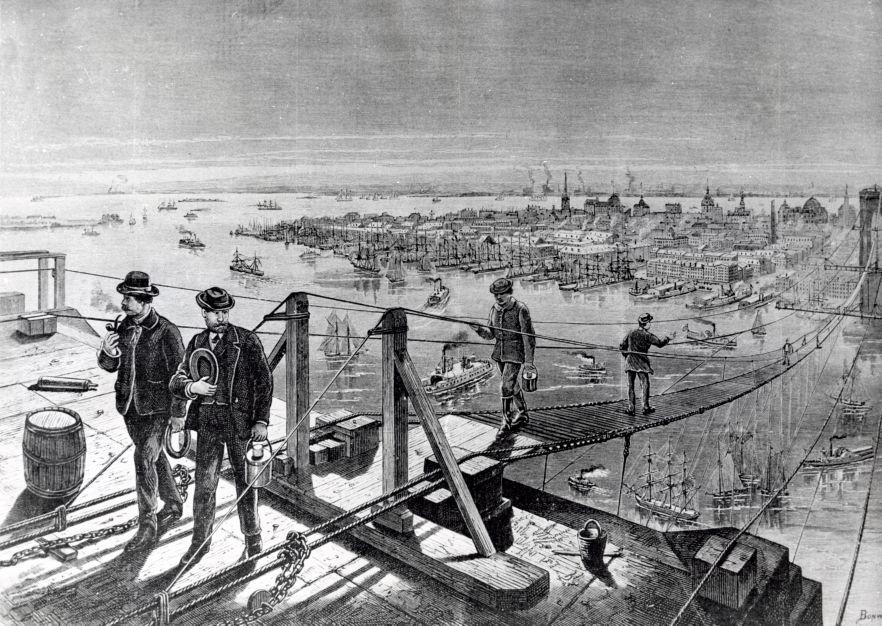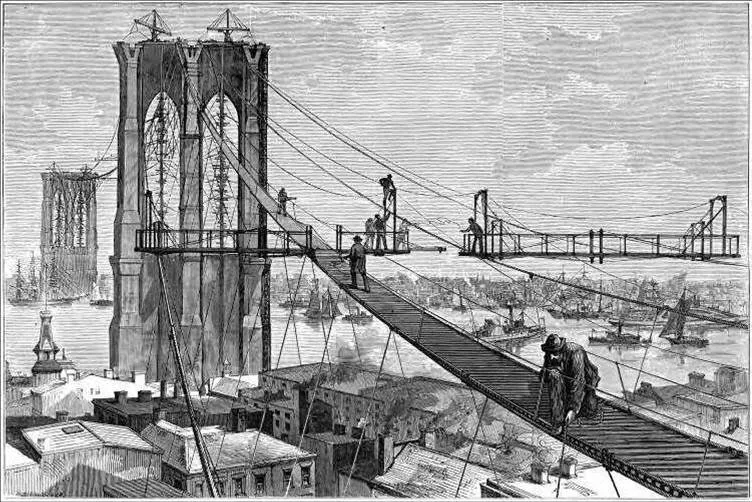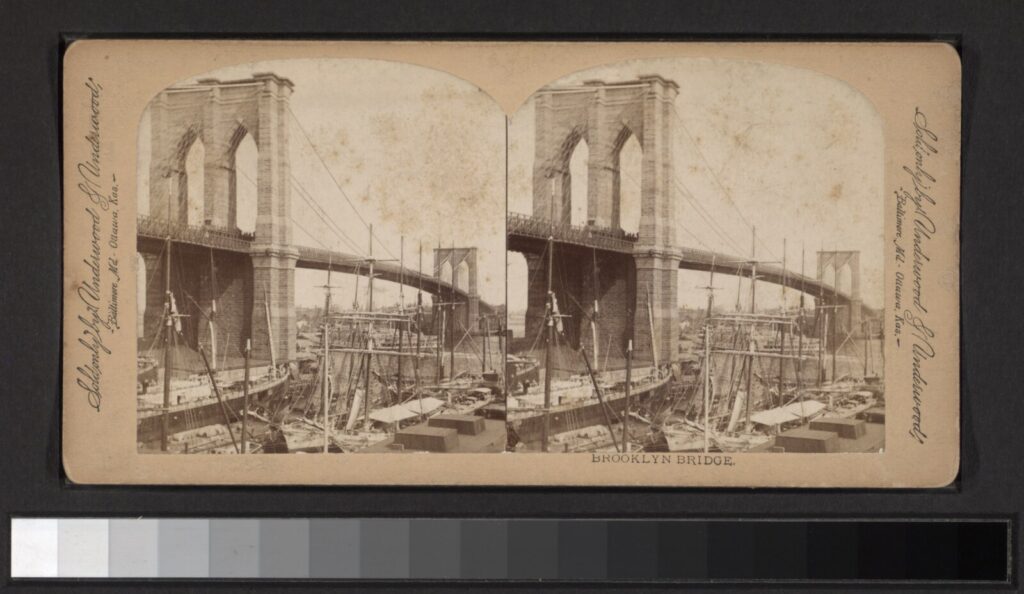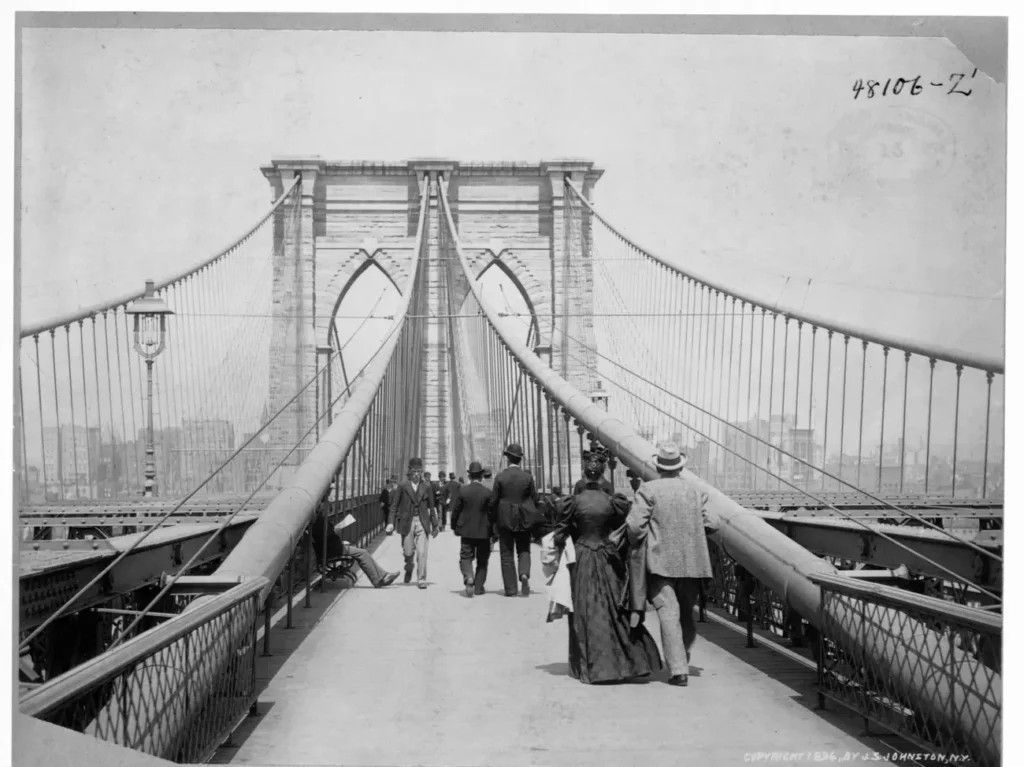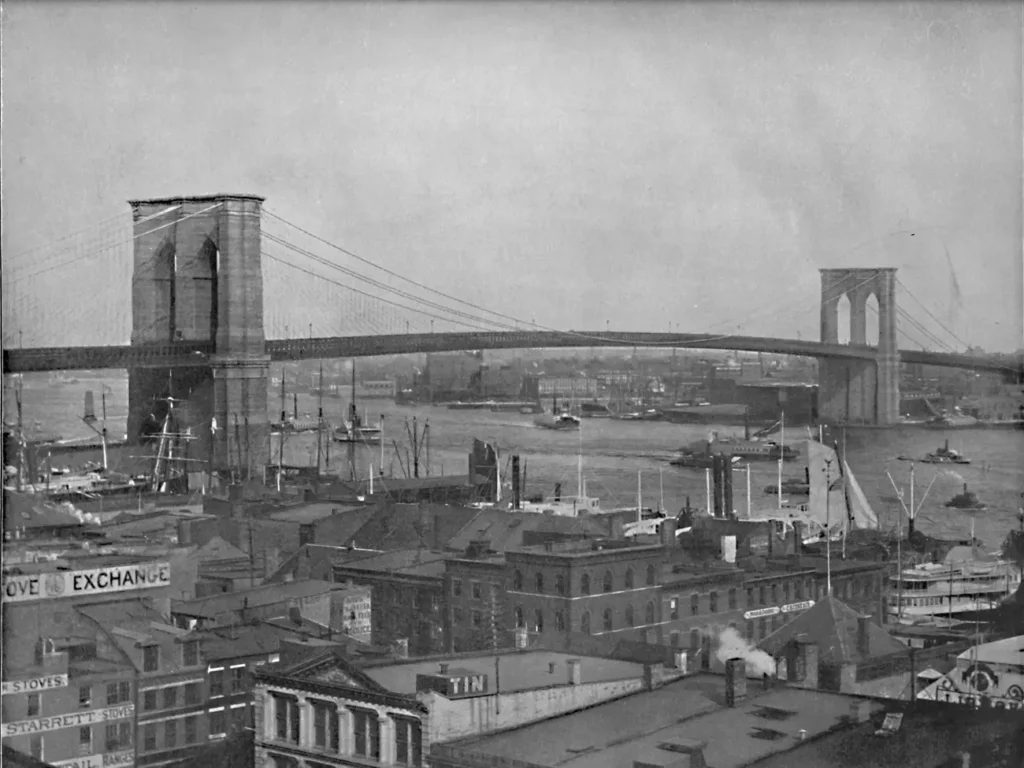Last updated on December 10th, 2024 at 09:25 pm
The Brooklyn Bridge is an iconic structure that connects the boroughs of Manhattan and Brooklyn in New York City. It stands over the East River. It is a combination of a suspension-style bridge and a cable-stayed bridge.
Talks of building a bridge across the East River began in the early 1800s. The original construction plans and models were created by John A. Roebling. His son, Washington, became the chief engineer once the construction plans started moving forward.
Construction officially began in 1870. Emily Roebling, Washington’s wife, was also an engineer. She ended up playing a pivotal role in the successful completion of the bridge.
The iconic towers sit upon bases known as caissons. These caissons had to be filled be pressurized air to get them to settle deep into their positions in the river.
Many of the workers ended up suffering from what is now know as decompression syndrome (also called the bends). At the time, it was being called caisson sickness because it was those who worked underwater with the caisson construction who began to suffer from it.
Many workers, including Washington, came down with sever cases of decompression syndrome. Because Washington was frequently incapacitated, his wife Emily eventually became the main overseer and supervisor of construction.
On top of many workers becoming injured, the bridge also suffered a fire in its early stages of construction. At its eventual completion, it was the longest suspension bridge of the time.
It is 1,595.5 feet long and stands 127 feet above the water. It was finally completed and opened to the public in 1883. It has since gone through many restorations to increase safety and repair parts that were becoming worn and dangerous.
In a city full of iconic statues, buildings, and entertainment, it stands as one of the most recognizable features in New York City. Let’s take a look at the early drafts and rare photographs of its construction.
